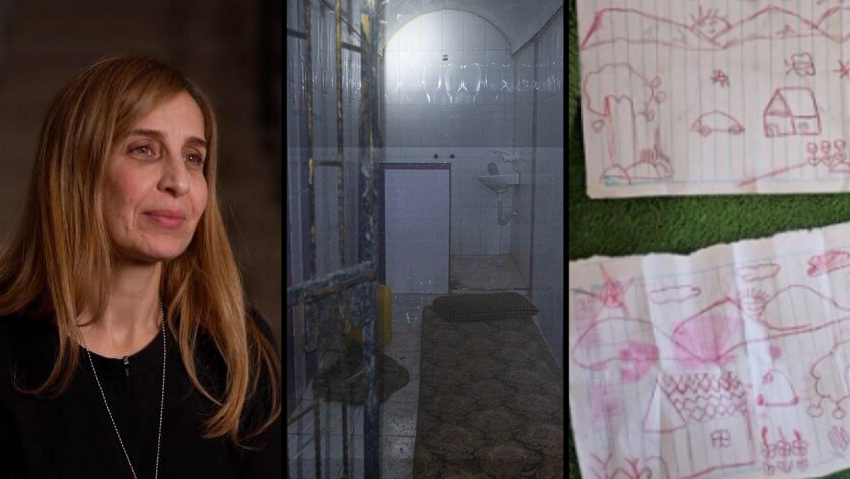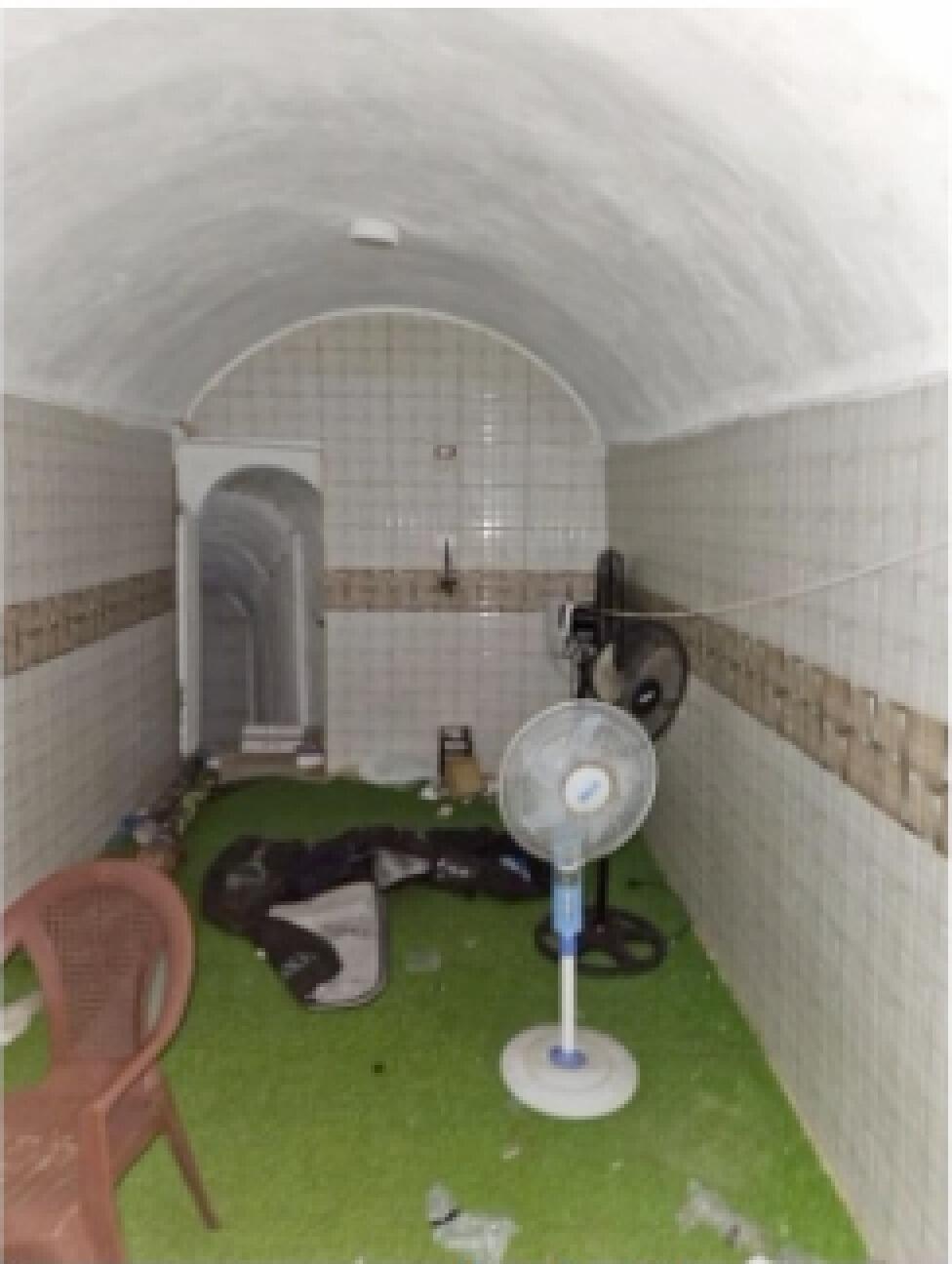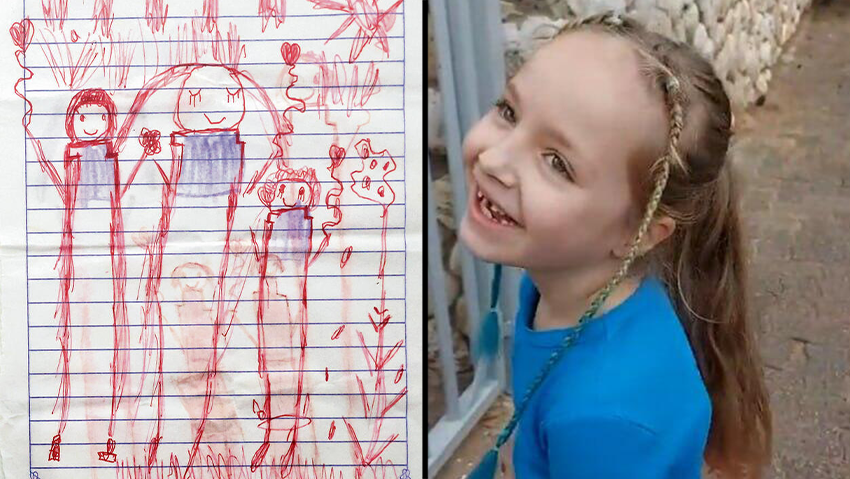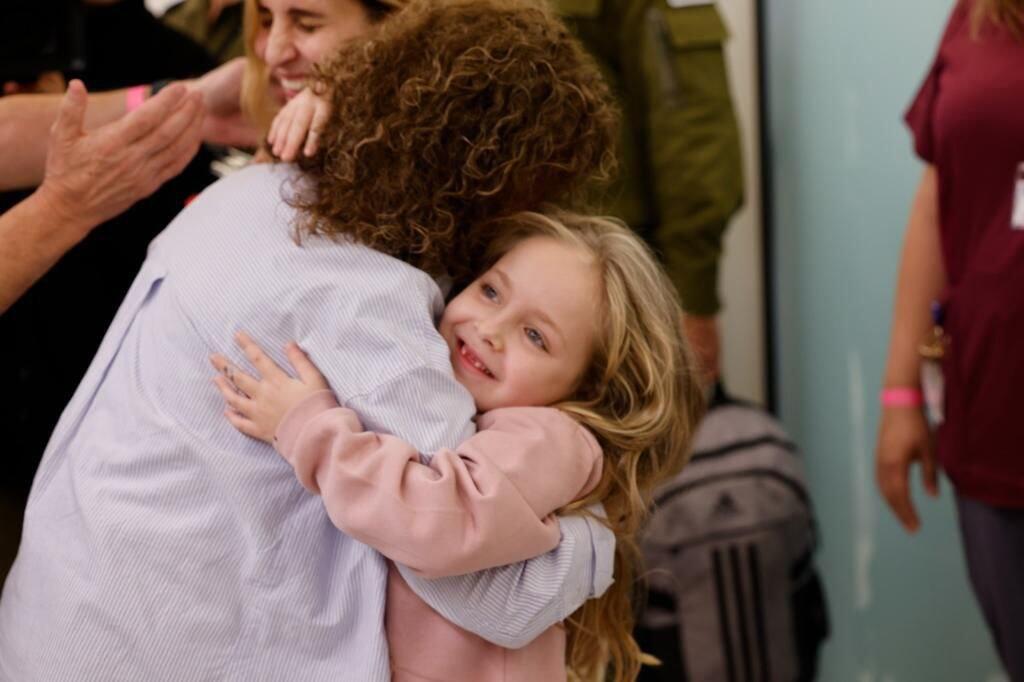Danielle Aloni, who was abducted to Gaza with her daughter 6-year-old daughter Emilia by Hamas terrorists during the October 7 massacre and released after 49 days, last November, said conditions the hostages were held in in a tunnel later uncovered and exposed by the IDF, were tough.
More stories:
"It was a tiny room, its width no larger than two meters from end to end," Aloni tells Ynet. "We were in this specific tunnel for about a week, where 16 people were crammed next to one another on mattresses. we couldn't breathe, there was no air."
4 View gallery


Danielle Aloni, Hamas tunnel uncovered in Gaza, Emilia Aloni's drawings
(Photo: IDF Spokesperson's Unit, Hostages and Missing Persons Families Forum)
IDF Spokesperson Rear Admiral Daniel Hagari reported last week that while troops in Gaza exposed a tunnel shaft, located in the house of a Hamas terrorist, the soldiers battled with terrorists. In the tunnel itself, situated 20 meters below ground, they found a central space where, according the IDF believed 20 captives were held at different times.
"The footage of the tunnels made me panic, but I'm outside, so it's not like I returned there," Aloni says. "I don't need photos to remember it; I’ll remember it as long as I live. It wasn’t the last place we were in, and there were other hostages there when we left."
She said the difficulty was the lack of air adding "There was no water during the time we were there, which meant we couldn't shower. It was prohibited to drink from the faucets, and they brought us drinking water in other ways. It was very humid, a there was a terrible lack of oxygen. The clothes were damp constantly, and beyond the fact that we were wearing the same clothes day after day, we were cramped and smelly,” she says.
"The humidity sticks to you and mixes with everything. The two fans seen in the pictures operated intermittently. There were long hours when we couldn't operate them. The overall atmosphere of the place is a claustrophobic and horrible feeling. You can't move or walk, and there’s barely any space. The part of the synthetic grass seen is about 20 or 30 centimeters in length, and the mattresses were right next to it. Emilia and I were on the same mattress, it was terribly damp."
Aloni said she could not wash her daughter's hands. "One day, I rinsed her with half a bottle of Coke filled with water. One of the hostages got angry at me for finishing their water because I had to wash my daughter who hadn't showered for several days. People were on edge, and feeling ill. Someone needed an oxygen tank; another one needed medication for her diabetes, and there was none. People were depressed."
Inside the tunnel, Emilia’s paintings drawn during her time in captivity were also found. "I was very surprised that they found paintings there. We were told it was time to leave, but one of the hostages told me that Emilia gave her these paintings as a gift. Other paintings are ones another released captive hid and brought with her," she says.
"It was very surprising and also joyful to see,” she adds. “You can see the motifs in the paintings. What else did she have to do there? She didn't have pens or a table; everything was painted with red ink. That's what we had. They gave her a notebook that we couldn't take with us, and she painted when she felt like it, when she had a spark of hope.
“Children express what they feel through play and painting, and in this case, there were a lot of longings for home, family, and the sun. I never asked her to paint; she did it for herself."
Talking about the IDF uncovering the tunnel, Aloni says, "I'm really not angry that the IDF reached this tunnel ‘only’ now. I appreciate the military’s work; the tunnels are complex structures. The IDF’s very descent there is a very, very challenging task," she says.
“Anger is the last thing I feel toward the IDF. On the contrary, I think soldiers entering the tunnels put them and the captives at risk, and I am worried for their safety. What will happen if they get closer, and Hamas knows that they’re closing in?"
Two months have passed since Aloni returned to Israel, but her heart was with the hostages still in the Strip. "Even after seeing it with our own eyes, it's impossible to imagine what we’ve been through," she says. "We’re paying a heavy price in this war – we must reach an immediate solution immediately. This isn’t a slogan; it's the grim reality imposed on us and on the people left there.
"I’m very worried because I know that there are many other tunnels like the ones we were in. People might be held there in the same conditions, even the elderly. I don't know what their physical and mental condition is like. We left them desperate, brokenhearted, and hopeless.
“This was only on the 49th day, so imagine how they feel on the 111th day. Our condition was bad, I don't know if I would’ve made it back healthy and well. What would my daughter’s fate have been like? We know that as the fighting intensifies, there are significant issues in Gaza with supplies and infrastructure."
Aloni says negotiating the release of hostages is difficult. "I know there are difficulties in the negotiations now, but an immediate deal must be made to bring back all the hostages. If there’s another partial release deal, they’ll spend another 100 and something days there, and I'm not sure we'll see them alive. It's hard to explain to people on the outside because no one can imagine what it's like to be inside of a tunnel. How can you live without sunlight? The body breaks down, the soul disintegrates,” she adds.
"Even if people come out of Gaza, I don't know if we can rehabilitate them physically and mentally. Every day that passes the potential for them becoming bodies grows. What else needs to be said? There’s nothing more urgent than bringing back the hostages."





